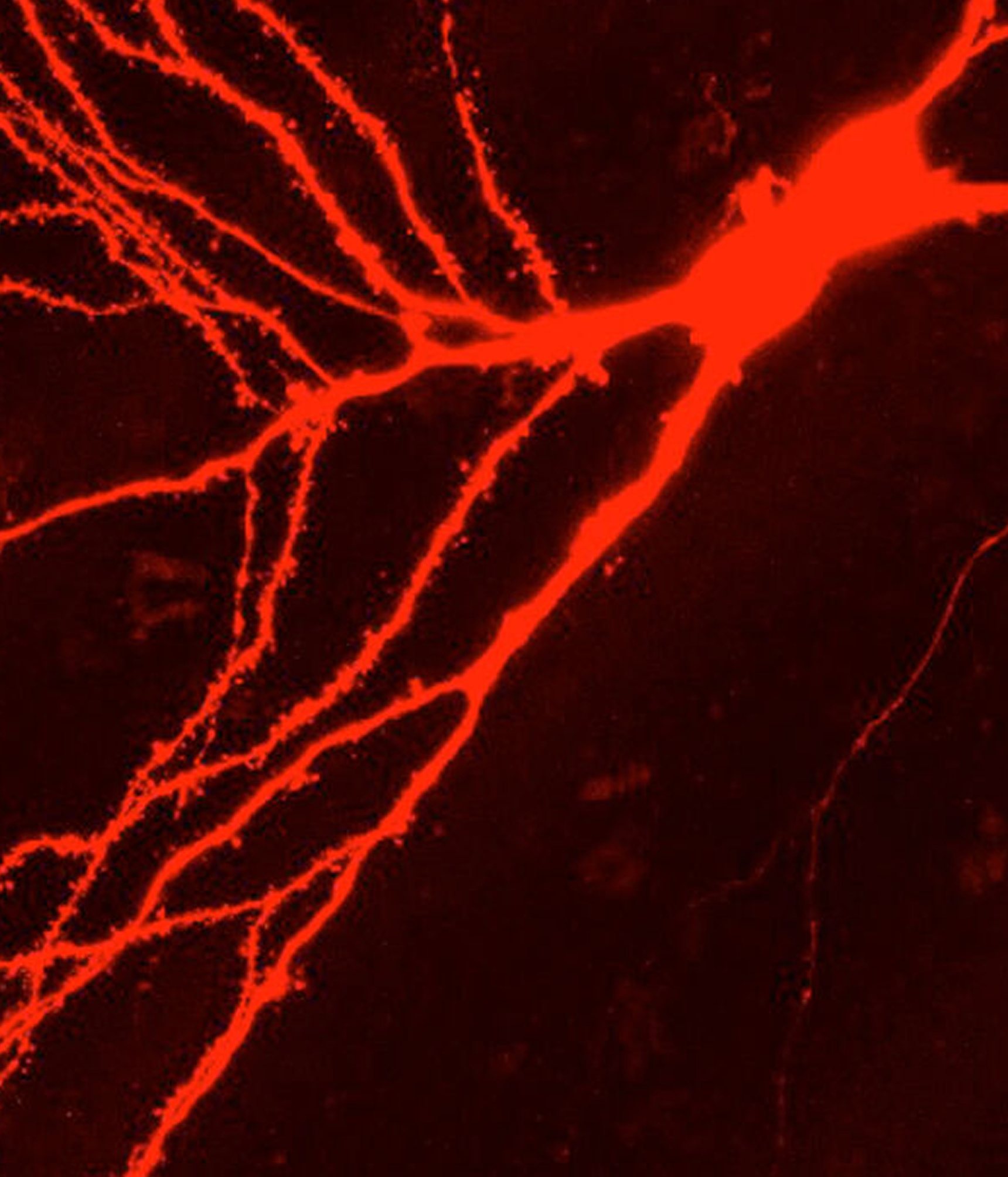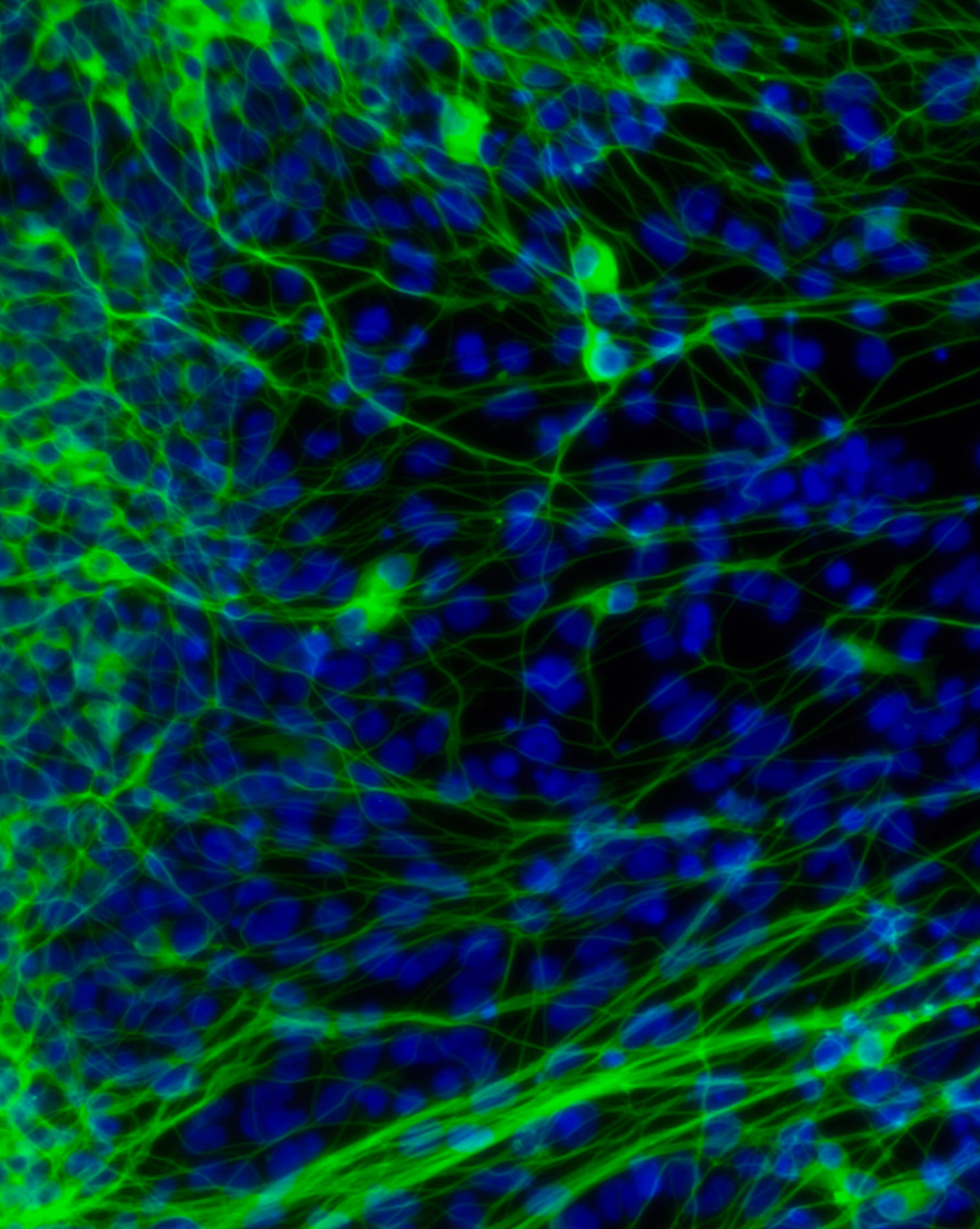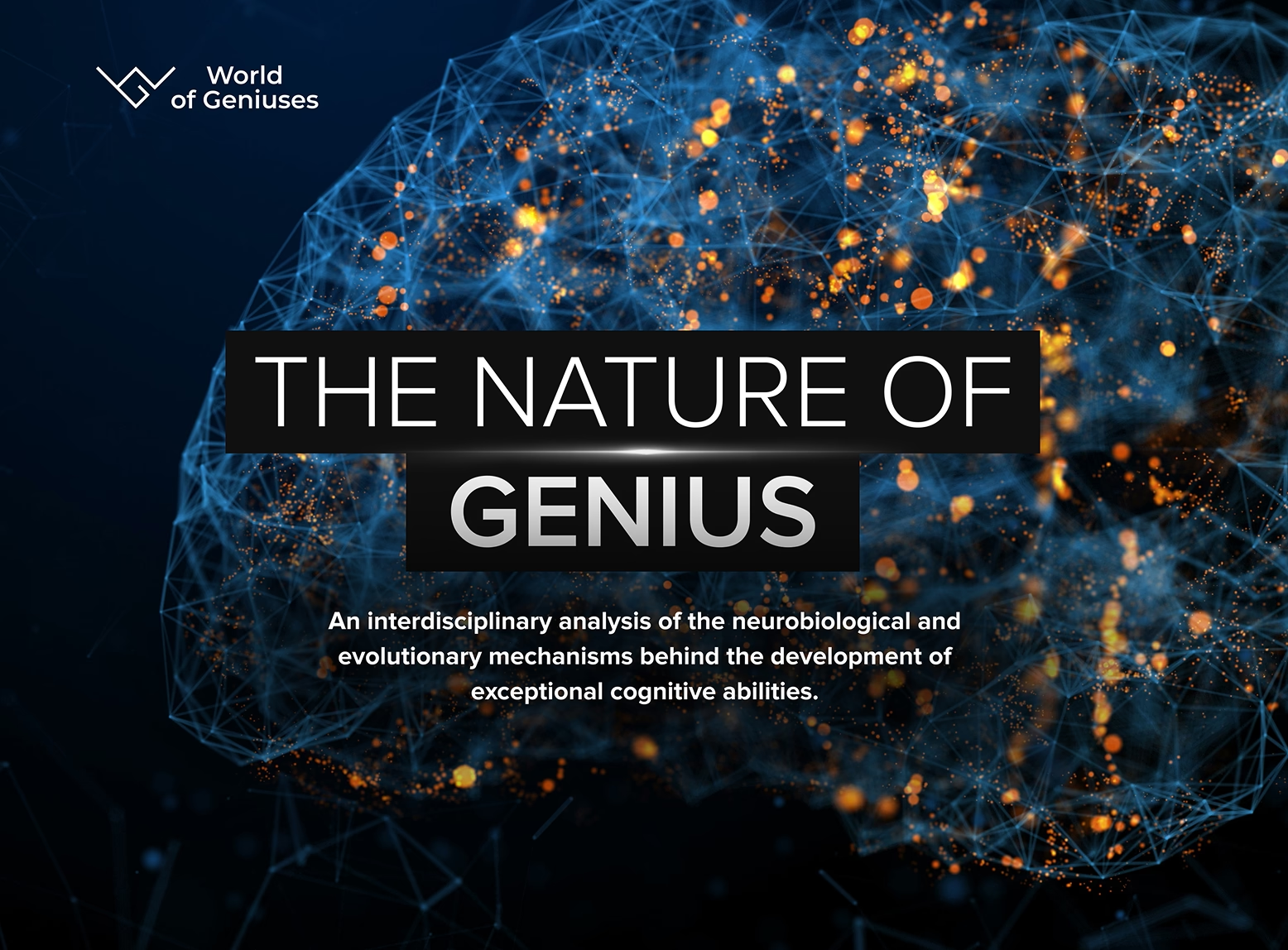The Nature of
Genius
An interdisciplinary analysis of the neurobiological and evolutionary mechanisms behind the development of exceptional cognitive abilities.
WHERE IS GENIUS
HIDDEN
THE EVOLUTION OF THE BRAIN CONTINUES TODAY
The human brain is a dynamic system that not only adapts to its environment but also actively engages in its own development. It possesses a unique ability to optimize its functions purposefully and independently set its developmental priorities.
From an evolutionary perspective, the brain has evolved over generations, constantly seeking new potential through complex processes of harmonization and self-organization. This progression reflects the deep-rooted drive within living systems for self-improvement and evolutionary advancement—a trait inherent in every individual and in human nature as a whole.
However, the evolutionary goals of animals and humans differ fundamentally. For animals, the success of a species is defined by its ability to survive and reproduce through physical adaptations. For example, a peacock invests resources in developing its magnificent tail to attract a mate—this is its form of "genius." Similarly, each species develops unique features: a ram has a strong forehead, a moose has powerful antlers, and a rhinoceros is protected by thick skin and a robust horn. All these traits serve a singular purpose: to ensure the reproduction and the survival of the population.
Humans, as a more advanced species, follow a different evolutionary path. Our key adaptations lie not in physical strength or defenses, but in the development of neural networks, intelligence, and consciousness. Thus, human evolution is a journey toward unlocking the potential of our consciousness.
In this process, the brain is not merely a tool for understanding the world; it is a self-sufficient system that actively participates in its own formation, striving to unlock new possibilities and transcend the limitations of previous generations.
The evolution of the human brain is an ongoing process. It has never ceased and continues today—within your lineage and within your own brain.
THE EVOLUTIONARY "MANAGER"
OF THE BRAIN
Mechanism of Neurobiological Adaptive Meta-Control
In recent years, modern interdisciplinary research into the brain—integrating achievements in neurobiology, genetics, epigenetics, evolutionary biology, and anthropology—has led to several significant discoveries. The results of these studies have revealed a previously unknown brain mechanism of phylogenetic adaptation: the ability of the brain to accumulate and transmit important "neural instructions" for evolutionary progress to subsequent generations.
At the core of this process lies an autonomous regulatory mechanism—a kind of "manager" of neural architecture that analyzes the state of neural networks and optimizes the distribution of brain resources guided by evolutionary priorities. This mechanism can be termed neurobiological adaptive meta-control, which determines:
- 1Mature Neural Patterns: Effective connections that have reached optimal levels of evolutionary development;
- 2"Gray Areas": New or promising neural connections and patterns that require further evolutionary refinement.
As a result, the brain allocates the majority of its active resources to developing young and emerging neural networks—these gray areas that evolution has not yet completed, leaving them to be refined by future generations.
Mature, stable neural patterns formed by previous generations are excluded from active modification and enter an energy-saving background mode: the brain ceases to use resources for their development, as they have already proven effective.
This resource redistribution allows for the formation of new connections while simultaneously maintaining a balance between the efficient functioning of the brain in the present and its potential for a qualitative leap in development in the future.

Each brain inherits and upgrades the neural patterns of its ancestors, creating a foundation for new breakthroughs.
Genius as an Evolutionary Reserve
The discovery of this mechanism has enabled an understanding of the fundamental nature of genius: its source lies in evolutionarily shaped yet dormant neural patterns—already refined over centuries of evolution. At the same time, genius is locked away by a meta-control system, remaining in the brain as latent potential—only activated under an extremely rare, coincidental convergence of specific external conditions and internal resources.
All known geniuses throughout human history who have accessed and unlocked their potential for genius are, in essence, the result of systemic disruptions within a finely tuned evolutionary mechanism.
Genius can be envisioned as a complex network of "dormant" neural connections, akin to a hidden pattern on a tapestry that has long remained unseen. However, when certain conditions are met, this pattern emerges and integrates into the overall design, creating entirely new combinations of connections and interactions throughout the neural architecture. This awakening reveals the unique capabilities of the brain, allowing it to find unexpected solutions, generate innovative approaches, and achieve outstanding results. This is how genius becomes visible, weaving into the fabric of thought and transforming it.
Evolution continually strives for new breakthroughs; it is essential for it to reach new stages of development. Therefore, from generation to generation, evolution "guides" the brain to develop gray areas until they can become, so to speak, "areas of genius." However, once a certain level is reached, these established neural patterns seem to enter a dormant state: the brain begins to ignore them, stops allocating resources to them, and ceases to actively use them in everyday life.
Inherent areas of genius are evolutionarily formed neural patterns and connections that establish the individual biological foundation for the potential of genius in specific areas of knowledge.
The Transmission of Neural Heritage Between Generations
How is the area of genius formed in an individual? It is essential to understand that the evolution of an "area of genius" in mathematics, for example, does not require that every ancestor of a person, generation after generation, engaged in mathematical sciences. Genius is cultivated through everyday practice and ordinary life.
When observed closely, mathematical principles permeate many trades: a builder calculates the proportions of a structure, a carpenter measures angles, a craftsman creates symmetrical patterns—each of these activities hones mathematical, spatial, and logical thinking. In this way, evolution naturally nurtures genius based on everyday practice, where knowledge and skills are accumulated through trades, labor, and experience, developing human abilities from generation to generation.
A telling example is the invention of the wheel. Its inventors likely did not possess a modern mathematical vocabulary or understand theoretical equations; however, this did not prevent them from making a revolutionary discovery. The key factors here are the practical application of knowledge, a deep understanding of the essence of phenomena, and the ability to generate new ideas—seeing what others do not and creating what has never existed before.

Thus, when discussing the formation of genius in any field, we are referring to an evolutionary process that unfolds through applied skills and collective experience, rather than through academic study of a discipline.
Evolutionary mechanisms fixate and transmit to descendants by inheritance both the optimized neural patterns of ancestors and a map of priority gray areas for development, which each new generation progressively "refines."
This system ensures the continuity of evolution: each new generation not only continues the development begun by its predecessors but also makes its unique contribution to enhancing the human brain.
Notably, even when the formation of an area of genius is completed in one individual, it does not guarantee that they will manifest as a genius. More often than not, this potential remains hidden from them, and the next generation begins to develop a new area of genius from scratch, starting from a gray area. This transitional generation frequently lacks pronounced talents and shows a tendency to shift interests often. This is a natural stage in the evolutionary process, during which it is determined which gray area will serve as the foundation for developing a new area of genius.

It is also important to understand that the process of evolution is directly influenced by the conditions in which a particular family lineage develops: access to education, occupation, and historical events. For example, wars or epidemics can interrupt a lineage's progress, compelling evolution to start anew. Genetic mixing through inter-lineage marriages can also alter evolutionary trajectories.
Therefore, the development of an area of genius may take tens of generations in some cases, while in others, it may span hundreds of generations. Moreover, some individuals may only develop one area of genius, while others may develop several such areas simultaneously. All of this reflects the lengthy, complex, and varied journey of evolution in the context of specific environments.
In this way, nature, like an unseen sculptor, has been refining the potential of the human brain for centuries.
As a result, within the brain of each person, there is formed a distinctive "repository of genius," of which the individual is unaware.
The brain is a universe that evolves according to the laws it has established for itself.

the Nature of Genius.
White Paper
An interdisciplinary analysis of the neurobiological and evolutionary mechanisms behind the development of exceptional cognitive abilities.

 Genius
Genius

